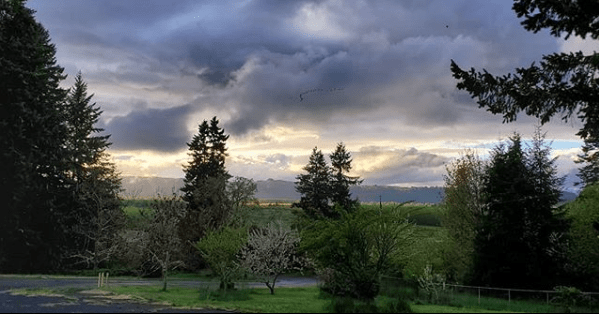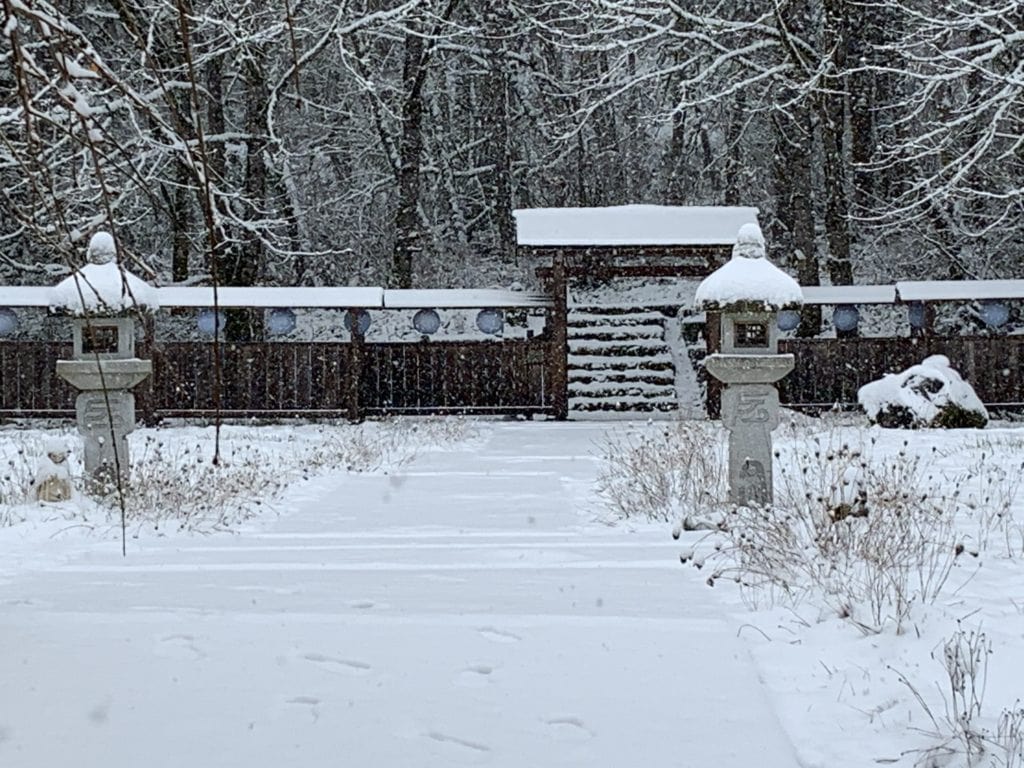Great Vow Zen Monastery is home to many beings. The most obvious are the human beings, those who come once or several times a year for a retreat or sesshin, and residents who drop in for a few weeks or stay for a lifetime.
Among us, there is a shared appreciation for the gardens and grounds that allow us to nurture our spirits and quiet our minds. How many of us have harvested fruit, cut back black berry canes, weeded the garden or helped maintain the trails?

This monastery is sustained by the help of countless hands.
2020 is a year that has embedded itself in the hearts and minds of us all. The great tides of social change, the heightening awareness of the climate emergency, and enormous political uncertainty has given us an opportunity to reflect on the choices we make and how we choose to engage with our world.
As we move forward into 2021 we attempt to pause, to take an inbreath and look out at our beautiful forest and garden and ask ourselves, how can we work to be part of a wave of change that could benefit beings for generations to come?
Reflection is valuable and important work. It can be helpful to start by reflecting on the magical and wonderful things that are already present in our world before examining whether the flexibility and energy remains for the opening of new possibilities.

So let’s begin with this years forest and garden highlights:
- The large nest in a towering maple above the Jizo garden looks like it is once again occupied by a pair of Great Horned Owls. Sitting quietly in the Zendo we can hear them hooting a call and response to each other as they hunt the forest floor.
- The tiny Doug Fir seedlings Seicho and Fallon planted several years ago, often hidden by blackberries and understory shrubbery, have healthy young crowns and look ready to settle in for the next 50- 1000 years.
- The fig trees behind the cafeteria wait with bare branches for spring to arrive. Last year we had figs ripening into October!
- Kosho has taken the helm as gardener and is also using her pruning skills to care for our plum and apple trees.
- And of course we can’t ignore Hogen’s elaborate bird feeders, set up in front of the men’s dorm. They attract hummingbirds, juncos, rufus-sided towhees, sparrows and others, including, what we think is a coopers hawk, sliding in now and then to pick up her own snack of snacks.
This 26 acres Monastery is brimming with mystery and life, the list is infinite. How many Junco nests did we find last year? And what of the salamanders? Is it wildflowers or weeds that wait for us under a heavy coat of mulch on the beds outside the zendo?
It is with deep pleasure that we attempt to immerse ourselves in this world. We, the humans, animals and forest, care for eachother. Depend on each other. And Speak. Each one, each deer and insect and tree has a voice. Here it is, we have the opportunity to listen and respond.
Each week monastery residents meet and discuss the nature of our fast changing world. The climate crisis is upon us. We discuss this as human beings over dinner, with one ear at the table and the other ear against the roots of the trees outside, the empty robins nest waiting for spring, the cry of the stellars jay on cold winter mornings.
It is a time for action and simultaneously it is a time to get quiet and to listen. How can I support the frogs and fallen leaves, the Oso berries steady reach towards the sky, my own deep aspiration for awakening? Not separate. How could it be?
We have bodies and breath and the miracle of life, and with it we respond, always with our best intentions, working with the tools that are available. The vow of the monastery is to provide a sanctuary and a place of practice for generations to come. May that aspiration arise and flower in harmonious balance with the living, breathing life of this beautiful land that surrounds us.
Written by: Myoyu Haley Voekel, Work Leader
